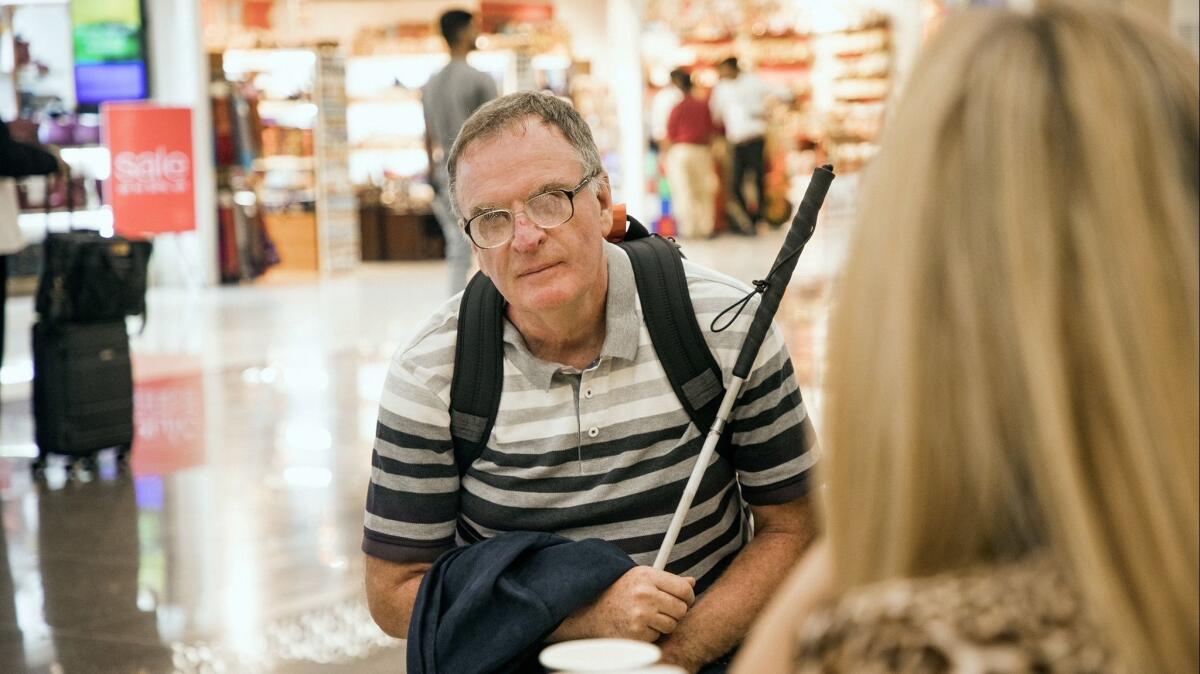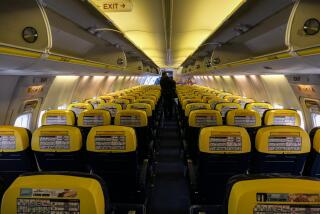This app acts as a set of eyes for blind or low-vision travelers

Pat Pound of Austin, Texas, follows Rule No. 1 of air travel: Arrive early to give yourself plenty of time.
“Then I sit there and think about what I would like to do,” she said by email.
For Pound, who is blind, navigating airports can be challenging. But a new way-finding app called Aira is helping.
“Now I can get up and go buy my cousin a birthday card and put it in the mail,” Pound said, describing some of the ways she can use the app while waiting for her flight. “I can go get some food to take on the plane. Or I can call and have the agent describe the lobby area so I know where the boarding door is.
“As a blind person there are many, many times every day when you just need a little bit of help learning the visual information that you were missing,’’ Pound said.
Aira connects blind and low-vision users with an on-demand sighted guide called an Aira agent, who uses the live video stream from their smartphone camera to provide visual information or smart glasses (think Google Glass) to act as visual interpreters and navigators.
Here’s how it works:
The user taps a button on the app to connect to an available trained agent who acts as a second set of eyes, describing what’s in the user’s visual field. When the user points his or her smartphone in any direction. it allows the agent to see what’s ahead, to the side or behind.
The agent has access to a dashboard with various helpful data fields, including points of interest, facial recognition that allows the user to identify nearby individuals and personal data from the user, such as names of friends and family and emergency contacts.
Aira agents can make calls on a user’s behalf, request a cab to take the person home safely or follow a user’s contingency plan in case of an emergency.
To get started, users download the app on their smartphone using the built-in audio features on the phone to navigate to the app center. (Search for Aira, which is available on Android and iOS devices. They also can order smart glasses from the company.)
Next, they’ll need to set up an account and decide on a monthly subscription. Plans vary. At the bottom tier, they can be guests, which gives some free access. or at the top tier, advanced, which offers 300 minutes and a pair of smart glasses, among other things, for $199 per month. You can review pricing and options at How It Works.
Like any new accessibility tool, users need to try it out before traveling. Make several test calls to Aira so an agent can familiarize you with the system.
More than 35 U.S. and international airports provide Aira service for free to blind and low-vision travelers. In May, the app made its debut at LAX and Charles M. Schulz Sonoma County Airport.
“Digital or cellular navigation will become easier and more widely available to people because Aira has created a business model that works for everyone,” said Eric Lipp, executive director of Chicago-based Open Doors Organization, which is partnering with Aira to expand the service to the travel and tourism industry.
At the Sonoma County airport, an Aira agent can help you get to a ticketing counter, read a flight board, identify your luggage at baggage claim or find a cup of coffee for you while you wait to board your flight.
“We’re trying to think in advance: If you were someone with a vision disability and you came to the airport by yourself, would you be able to navigate the airport, understand its layout and get the services you need?’’ said Adam Borovkoff, department analyst for the airport, which picks up the $2-per-minute fee so passengers and visitors can use Aira free.
The initial setup was simple, he said, costing just $1,000. Once he provided the company with a map of the airport, it was ready to go live with the service.
LAX also offers free access to the app.
“L.A., after New York, has the second-highest population of vision-impaired people, so we know a lot of (them) will use our facilities,’’ said Justin Erbacci, chief innovation and commercial strategy officer for Los Angeles World Airports.
“What impresses me is the ease of use,” Erbacci said. “All they have to do is turn on the app, and they suddenly have another set of eyes to help them make it through the airport.’’
Aira users, which the company calls “Explorers,” buy minutes that are deducted every time they use the service. But at Aira Access locations — airports and museums that have joined the Aira Access Network — the facility pays. For example, the Smithsonian museums in Washington, D.C., offer free Aira access.
More about Aira.
More to Read
Sign up for The Wild
We’ll help you find the best places to hike, bike and run, as well as the perfect silent spots for meditation and yoga.
You may occasionally receive promotional content from the Los Angeles Times.






